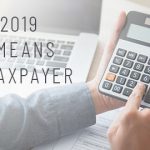How to claim expenses when multiple Self-Employed people work from one home
Let’s say you and your partner are both self-employed and work from home – who gets to claim those ‘use of home as an office’ expenses and how much? This is a question I was asked this week and it seems to be quite a common problem for many partners who live and work under one roof so I thought I’d write the simple method in which both people can claim their expenses. Spoiler Alert…there’s some simple mathematics required!
If you’re already clued-up on business accounting and are in a rush then I’ll just quickly round this up – each person can only claim their PERSONAL percentage of each living expense. So the rule of thumb is to calculate the total percentage used of each expense, then divide it by however many people live in that home. Simple! For a more in-depth look keep reading…
So before we get started just to clarify, this article is in relation to all the expenses which fall under the ‘use of home as an office’ rule, in which you’re allowed to claim living costs and utility bills etc which you need in order to run your business including (but not limited to):
- Electricity
- Heating
- Council Tax
- Mortgage Interest
- Rent
- Internet/Telephone
To get a solid idea of how this works let’s use an example scenario. We have two people living under one roof who are both self-employed and use the home as an office to run their businesses. Each person will need to complete a self-assessment tax return at the end of the financial year and will be allowed to claim a proportion of their living costs because they use their home as an office. There are now 2 steps to calculating these joint expenses.
Step 1: Calculate expense’s total use for business
The key thing to remember here is that each person can ONLY claim the percentage they personally use of each expense – so each person cannot claim the full amount. So let’s take the electricity bill for example. Firstly you must calculate the total amount of hours the electricity is used for business. There are two methods of doing this:
Method 1: Percentage of rooms in the home
This is a simple method in which you simply work out what percentage your office is in relation to the amount of rooms in your home and claim this.
You simply count the total amount of rooms in the home, minus bathrooms and kitchens. As an example let’s say you live in a 3 bedroom house with a living room, but use one of those rooms as an office. This equals 1/4 rooms as an office space = 25%. This means you can claim a TOTAL of 25% of all living costs. Simple!
Method 2: Percentage of hours worked for business
Now let’s say you both work 9am to 5pm, 5 days per week – there are a total of 168 hours in a week and you jointly use the electricity a total of 40 hours per week, this equates to a total percentage of approx 23% (Sum = 40 / 168 x 100).
Step 2: Calculate personal business share of expense
So we now have the total percentage used for business of that expense. We now simply need to divide that percentage by how many people use the home as an office, which in this scenario is 2 people. So nice and simple (let’s go with the 2nd method for ease), 23% divided by 2 people equals 11.5%. Therefore each person in that household can claim 11.5% of that electricity bill within their tax return each year.
To finish off let’s just look at how you calculate the physical amount from that percentage. So if each electricity bill was £50 and you can personally claim 11.5% of that expense then you would simply do the following equation:
(Expense Amount) x (Personal Percentage – Move Decimal 2 Places Left) = Amount Claimable
Which in our example looks like this:
(£50) x (.115) = £5.75
So each person can claim £5.75 in their tax return for each electricity bill that’s listed – this of course is likely to be 12 times for the year, allowing each person to claim a total of £69 in electricity.
That is how you claim a single expense when multiple self-employed people work from one home. In principal it’s just remembering you can only claim your OWN useage of each expense. So to quickly round up here are the 2 simple steps you need to follow for each expense:
- Calculate total amount used for business (using either of the 2 methods)
- Divide this amount by how many people work from the one home














Share On